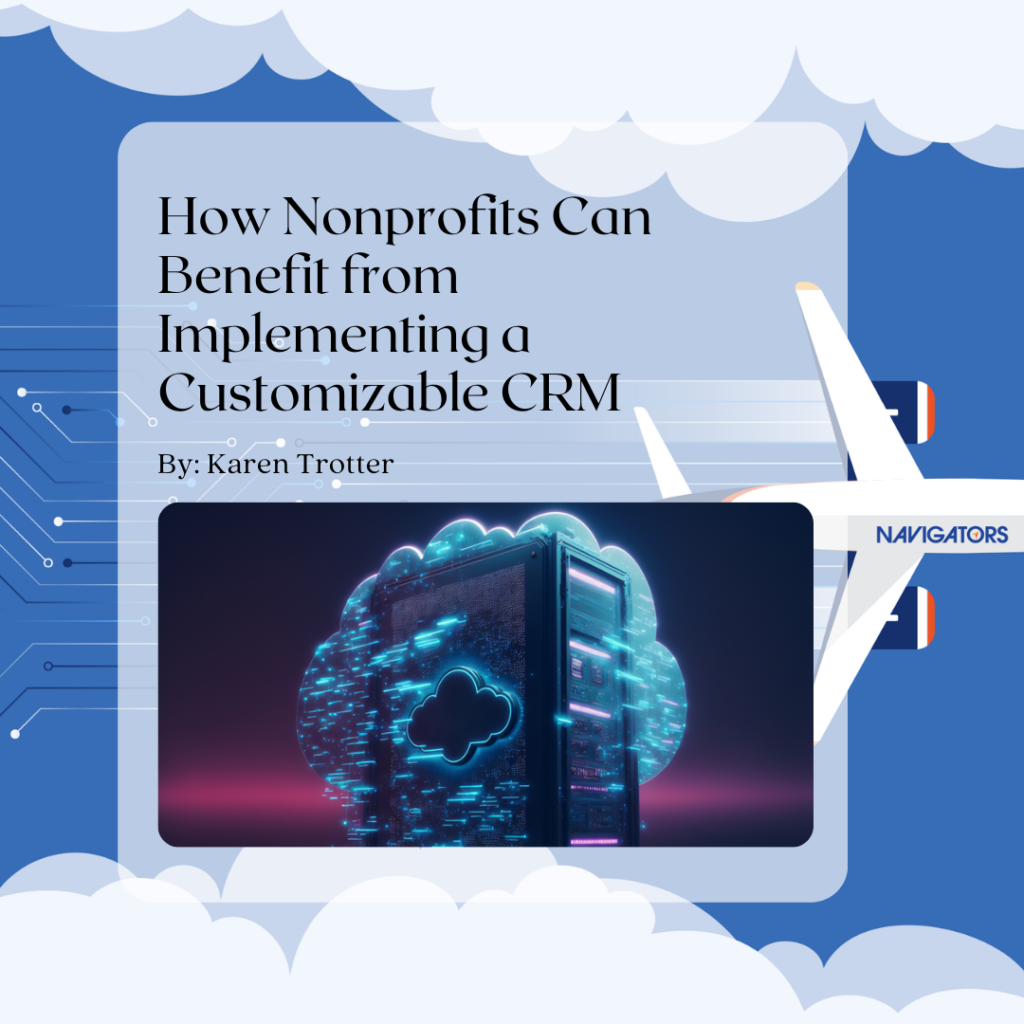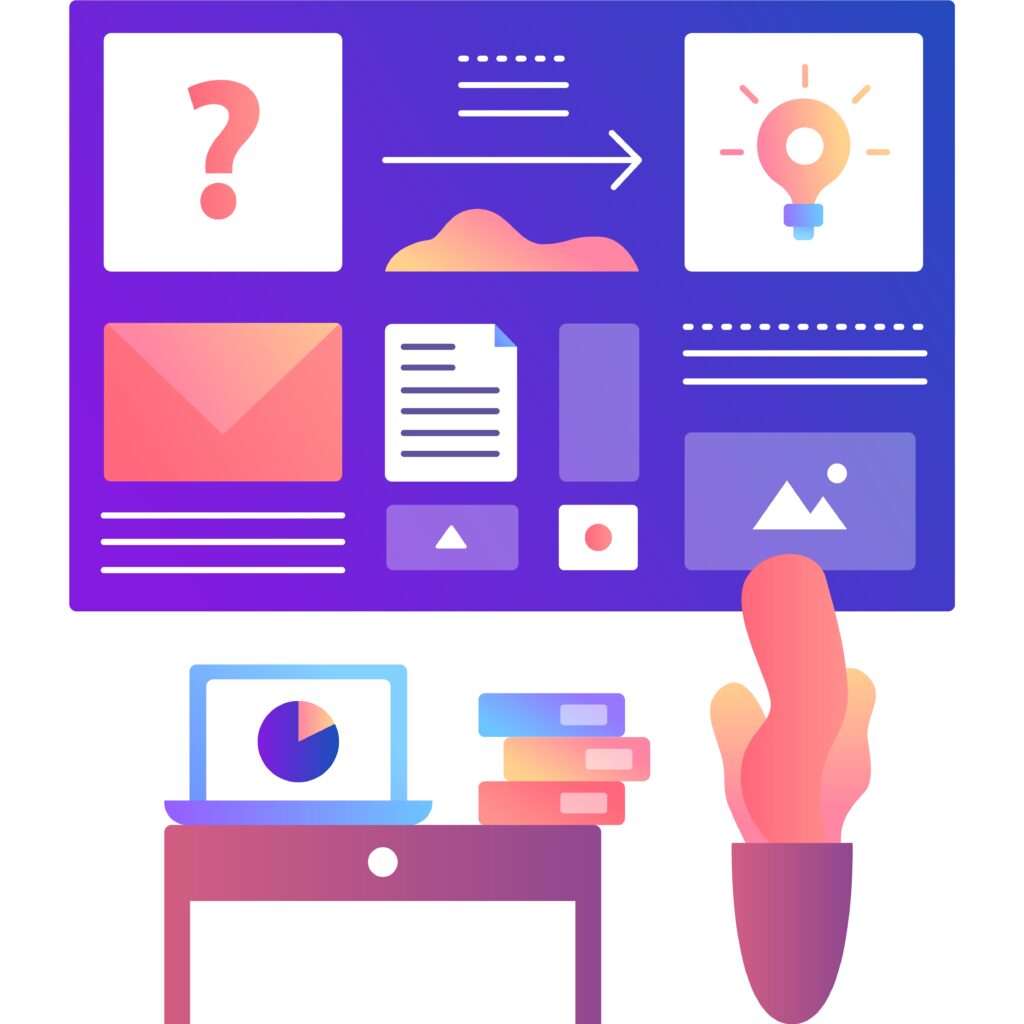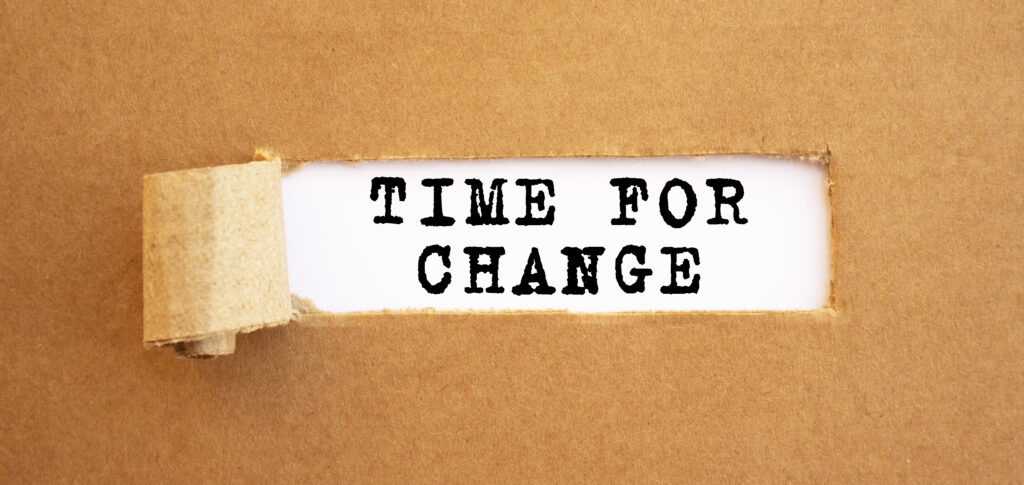How Nonprofits Can Benefit from Implementing a Customizable CRM

Last week, my 76-year-old mother stopped by the Altoona Staples store to ask if they had Rolodex cards in stock. She wanted to replace some of her cards that have gotten jumbled over time with corrected and crossed-out information. When she told this story to me, I wasn’t surprised to hear that the staff kindly explained that there weren’t any cards in stock. I was surprised that their fulfillment center still had the exact format she needed and were able to have a set delivered to her within a few days!

Many organizations are ahead of my mom, and have already gone through a digital transformation, to capture information about contacts and accounts in a software application of some kind. The typical solution is a Customer Relationship Management (CRM) database. For those of you not already familiar with the idea and acronym, a CRM stores records of contacts, accounts, and sales opportunities in a way that allows a user to see how a customer relates to different parts of the business. A contact may have worked for one organization in the past and then moved to another. An account may have purchased an item from inventory three years ago that now needs to be replaced with the latest version of the same or similar product. With a CRM, you can use those related pieces of information to efficiently manage an organization, by ensuring everyone has the same information available with minimal duplication of effort and maximum ease of access.
At our house, there is a designated spot by the front door where drivers of our three vehicles leave the keys. Knowing where those keys are saves time and effort and arguments (although figuring out which teenage son gets to use the truck on a given day may still need a conversation). Having a CRM is much the same – when you designate the spot where your data lives, and make sure that everyone knows where and how to access it, there are fewer rounds of wondering where that list of attendees is filed, or how many people are currently active members of your organization. Instead, your CRM is your single source of truth.
Some industries are further ahead in the CRM adoption curve than others. (The concept of the technology adoption life cycle has been popularized by authors like Malcolm Gladwell and Clayton Christensen, and is based on research from Bryce Ryan and Neal Gross’ 1942 study of the adoption of Hybrid Seed Corn in Iowa’s Greene County. I’m reasonably sure one of the study’s subjects was my great-great-grandfather, a farmer and lifelong resident of Scranton, Iowa. How’s that for an obscure Iowa reference?)
Your industry and your organization’s spot on that curve is likely affected by several factors. One of these is access to funds, and another is staff time for research, development and implementation of any new solution. A further hurdle is how challenging it may be to convert to a new system from your current system, whether that’s paper, or a spreadsheet, or an out-of-date database. Since my experience has primarily been with CRMs used by nonprofits, that’s the industry I’ll be talking about for the rest of this blog.
In the nonprofit world, the “C” in CRM more often refers to constituents than customers, and the concern is tracking donations, memberships, and services. However, the value of a database that relates all of that disparate information in an organized and dependable fashion is much the same.
The typical plight of nonprofits, of being underfunded and understaffed, puts many organizations at a disadvantage when it comes to adopting new technology. However, I have seen how useful it can be to put in the effort to find a CRM that suits your current needs, is economical, and can scale into the future of new technology and your nonprofit’s expanded operations.
Use Case Examples

As a nonprofit, you must be receiving funding from donors or grantors, and you need a way to track and acknowledge those transactions. In addition to these standard uses, there are plenty of unique ways for nonprofit organizations to use a CRM.
If you run an equine therapy service, you need to track:
- Clients and their health providers
- Volunteers who assist with activities as diverse as cleaning stables and hosting client sessions
- Attendees at an annual fundraising gala with live and silent auctions
At a donor-funded museum, you need to track:
- Attendance by zip code or age range
- Provide membership-based discounts
- Manage an online and in-person store
At a local historical society, you need to track
- Historical markers, along with the latitude and longitude of the marker
- Sponsoring organizations
- Grants that are received and then distributed as sub-grants for local restoration projects
These are all possible use cases, with plenty more examples to be found in the Des Moines metro and nationwide.
CRM Factors to Consider
While some aspects of a CRM are familiar from one option to another, there are many ways for one solution to differ from another. It’s those differences, after all, that allow CRM providers to support the unique ideas, events and histories of their customers. As a customer, you should be prepared to evaluate the options based on what is most important to your nonprofit. Here are a few considerations that might make your list:
- Reliability – can you trust that the CRM’s data will be available, accessible and uncorrupted?
- Ease of use – how easy is it to learn the features of the new system, or any new features that are added over time?
- Customizability – can the system be customized to your organization’s needs, with additional fields, reports, layouts or non-standard data?
- Level of support from company & community – does the provider offer technical support? Is there a community of established users who can share tips and tricks with new users?
- Interoperability – does the CRM connect with other software, particularly ones you already use or would like to use in the future?
- Longevity – is this CRM produced by a company that you can expect to stay in business for many years to come?
- Economics / Pricing – can you afford the annual per-user fee? Is there a discount for nonprofits? Be sure to consider how much time a new system may save staff, and the value of that time being used on other productive activities instead.
Preparing for Change
Those are all issues to evaluate on the CRM provider’s side. But what about within your own organization? How do you know if you’re ready to make a big change?

The easy part is choosing a time. A good time to choose is when you are starting a new program or fundraising event, or when you can have a clean accounting cut-off at the end of a fiscal year. Sometimes you may be forced into the change because your current system is ending support for a particular aspect of your solution.
The more difficult part of preparing is assessing and increasing your organizational readiness. A new system will take time to install and implement. You may want to replace your current solution because it has become too clunky, or is incompatible with crucial new software. It is worth the effort to first clean your data as much as possible, and avoid replicating your existing processes in a new system. You should consider following the best practices of a new system, and going with the flow of how those experts designed the system, instead of planning on lots of customizations from the beginning. In addition, a CRM implementation is a great time to establish and elevate your organization’s commitment to data governance. Building regular reviewing and archiving of data into your nonprofit’s annual calendar is easier when you’re already having to change a lot of processes related to data management.
CRM Challenges, Benefits, & Resources

You may be feeling daunted by the thought of the effort involved in considering all of these factors, and setting aside time for a data migration. Donor relationship managers may feel protective of their lists of donors and contact information. Gala organizers may feel similarly about their lists of sponsors and vendors.
It helps to think about the benefits you can look forward to, once your project is complete. You can focus on collecting the information in a way that makes it easy to record and to share, while maintaining appropriate guidelines about which user can see which set of information. Then you can eliminate the worry of losing a single data source, or of having a lengthy transition when one staff member is replaced by another. Externalizing the institutional knowledge that is held by long-serving volunteers or board members as well as staff means you can have enhanced context for your donor relationships, too. A well-functioning CRM that connects to an online payment platform will result in an improved experience for event attendees, and that may lead to increased donations and other forms of support. And being able to easily and quickly track the impact your organization has on its constituents may inspire your staff to new heights of productivity!
There are many resources available for organizations that are considering adopting a new CRM. Many are sponsored or written from the perspective of a particular provider or consulting partner, so you should consider the source of any material you read.
In the interest of full disclosure, I will state that the majority of my CRM experience has been with Salesforce, and that I work as a consultant for a company that is recognized as a Salesforce partner. Salesforce was the first CRM to be fully based in the cloud, with no need for installation on your desktop or server. Since its founding in 1999, it has grown into a trusted provider of a customizable platform that has expanded from its customer base of sales teams to include many other industries, like health care, education and nonprofits. In fact, if your organization is a 501(c)3, you can qualify for 10 free licenses. Salesforce’s customers also benefit from an ever-expanding list of optional add-ons via its AppExchange, which is full of solutions that can fill in any gaps in functionality, or just provide a ready-to-go option to save time on development. There is also the free self-paced learning that covers Salesforce’s features and best practices, and certification programs for users and consultants. Salesforce is not the best solution every time, but I have come to admire its adaptability and the positive spirit of the many people in the ecosystem.
I wonder what kind of CRM Staples uses? And have they set a reminder to check in with my mother in 25 years or so, when she may need another replacement for her Rolodex cards? I hope they have listed me as a successor contact, just in case.

Karen Trotter
Karen Trotter is a Salesforce Consultant at Navigators. She is a 8x Salesforce Certified professional who is passionate about telling stories with data, and using technology to solve people problems. Her previous experience includes being a finance manager and database administrator at the former Iowa Department of Cultural Affairs, and a financial analyst in the software, aerospace and telecommunications industries. She is a native of Des Moines, Iowa who has also lived in Kansas, Wisconsin, California and the UK, and has been a part of various nonprofit groups dedicated to supporting history, arts, culture and communities.